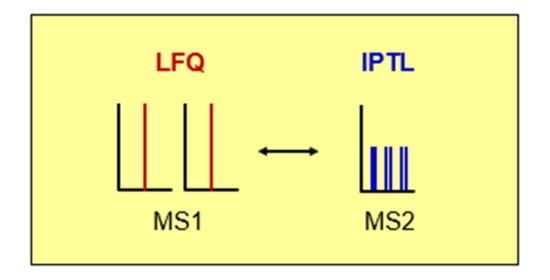Comparison of LFQ and IPTL for Protein Identification and Relative Quantification
Abstract
Share and Cite
Johannsen, C.; Koehler, C.J.; Thiede, B. Comparison of LFQ and IPTL for Protein Identification and Relative Quantification. Molecules 2021, 26, 5330. https://doi.org/10.3390/molecules26175330
Johannsen C, Koehler CJ, Thiede B. Comparison of LFQ and IPTL for Protein Identification and Relative Quantification. Molecules. 2021; 26(17):5330. https://doi.org/10.3390/molecules26175330
Chicago/Turabian StyleJohannsen, Christina, Christian J. Koehler, and Bernd Thiede. 2021. "Comparison of LFQ and IPTL for Protein Identification and Relative Quantification" Molecules 26, no. 17: 5330. https://doi.org/10.3390/molecules26175330
APA StyleJohannsen, C., Koehler, C. J., & Thiede, B. (2021). Comparison of LFQ and IPTL for Protein Identification and Relative Quantification. Molecules, 26(17), 5330. https://doi.org/10.3390/molecules26175330






